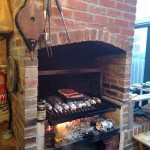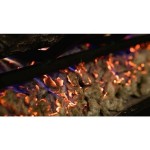Can Electric Fireplaces Be Repaired?
Electric fireplaces offer a convenient and aesthetically pleasing alternative to traditional wood-burning fireplaces. They provide supplemental heat, ambiance, and visual appeal without the need for venting or fuel storage. However, like any electrical appliance, electric fireplaces can experience malfunctions requiring repair. The feasibility and practicality of repairing an electric fireplace depend on several factors, including the nature of the problem, the availability of replacement parts, and the owner's technical skills.
Understanding the components of an electric fireplace is crucial for assessing repair possibilities. These fireplaces typically consist of a heating element, a blower fan, a control panel with switches or a remote receiver, and a visual display mechanism, which may involve lights, mirrors, or a projection system to simulate flames. Problems can arise in any of these components, leading to a variety of issues, such as failure to heat, malfunctioning flame effects, or unresponsive controls.
Identifying Common Problems in Electric Fireplaces
Before attempting any repairs, it is essential to accurately diagnose the problem. Common issues encountered with electric fireplaces include: a lack of heat output, flickering or absent flame effects, unresponsive controls, unusual noises, and complete power failure. Each of these symptoms points to potentially different underlying causes.
A lack of heat output could stem from a faulty heating element, a malfunctioning thermostat, or a problem with the blower fan. The heating element, similar to those found in electric ovens or space heaters, can burn out over time. The thermostat, responsible for regulating the temperature, might fail to accurately sense the room temperature or properly engage the heating element. A malfunctioning blower fan, responsible for circulating the heated air, can impede heat distribution and cause the unit to overheat, potentially triggering a safety shut-off. Before assuming a heating element issue, it is vital to verify that the thermostat is set correctly and that the blower fan is functioning. Also, ensure the unit is not in "flame only" mode.
Flickering or absent flame effects can be attributed to issues with the light bulbs, LED arrays, mirrors, or the motor driving the flame simulation mechanism. Burnt-out light bulbs or LEDs are a common cause and are typically easily replaceable. A malfunctioning motor can cause the flame effect to appear erratic or to cease entirely. In more sophisticated models with projection systems, problems could arise with the projector lamp or the optical components.
Unresponsive controls, whether on the unit itself or via a remote control, can indicate problems with the control panel, the remote receiver, or the internal wiring connecting these components. The control panel may have faulty switches or buttons, while the remote receiver might be unable to properly interpret signals from the remote control. A complete power failure often suggests a problem with the power cord, the main fuse within the unit, or the internal wiring.
Unusual noises, such as grinding, buzzing, or rattling, often indicate a mechanical problem. These noises could be due to a loose or damaged blower fan, a failing motor in the flame effect mechanism, or debris lodged within the unit. Identifying the source of the noise is crucial for determining the appropriate course of action.
Assessing Repair Feasibility and Safety Considerations
Once the problem has been identified, the next step is to assess the feasibility of repair. This involves considering the availability of replacement parts, the complexity of the repair, and the owner's skill level. Replacement parts for electric fireplaces can be obtained from appliance repair shops, online retailers specializing in fireplace components, or directly from the manufacturer. The availability of parts, however, can vary depending on the brand, model, and age of the fireplace. Older or less common models may have limited parts availability, making repair more challenging.
The complexity of the repair is another important factor. Replacing a light bulb or cleaning a dusty fan is generally a straightforward task that most homeowners can handle. However, more intricate repairs, such as replacing a heating element, repairing a control panel, or troubleshooting electrical wiring, require a higher level of technical expertise. Attempting complex repairs without proper knowledge and experience can be dangerous and could potentially damage the fireplace or create a safety hazard. It's usually best to consult a qualified technician or electrician.
Safety is paramount when working with electrical appliances. Before attempting any repairs, it is essential to disconnect the fireplace from the power source. This prevents the risk of electric shock. Furthermore, it is crucial to follow all safety precautions outlined in the manufacturer's instructions. If unsure about any aspect of the repair process, it is always best to seek professional assistance. Working with electricity can be hazardous, and a mistake can lead to serious injury or even death. Never attempt repairs on any electrical device when the device is plugged in.
When Professional Repair is Recommended
While some electric fireplace problems can be resolved with simple DIY solutions, other issues necessitate professional repair. Situations where professional assistance is highly recommended include: electrical malfunctions, issues with the control panel, and complex mechanical problems.
Electrical malfunctions, such as short circuits, blown fuses, or faulty wiring, should always be addressed by a qualified electrician. Attempting to repair these issues without proper training and equipment can be extremely dangerous. An electrician can safely diagnose the problem, identify the underlying cause, and implement the necessary repairs to restore the fireplace to proper working order. They will also ensure that all repairs comply with relevant electrical codes, minimizing the risk of future problems.
Issues with the control panel, particularly if they involve complex circuitry or programming, often require professional attention. Repairing a control panel may involve replacing individual components, such as microchips or circuit boards, which requires specialized tools and skills. A technician with expertise in electronics repair can accurately diagnose the problem and implement the appropriate solution, ensuring that the control panel functions correctly.
Complex mechanical problems, such as a damaged motor or a malfunctioning flame effect mechanism, may also warrant professional repair. These issues may involve intricate components that are difficult to access or repair without specialized tools and knowledge. A qualified technician can disassemble the unit, identify the source of the problem, and replace or repair the affected components, restoring the fireplace to its original functionality. They can also ensure that all moving parts are properly lubricated and aligned, preventing future problems.
In summary, the repairability of an electric fireplace is contingent on the nature of the problem, the availability of replacement parts, and the owner's technical expertise. While some minor repairs can be undertaken by homeowners, more complex issues involving electrical components, control panels, or intricate mechanical systems should be entrusted to qualified professionals to ensure safety and proper functionality.

How To Fix The Flame On An Electric Fireplace Universe

Fireplace Fix Easy Tips To Renovate Retrofit And Replace An Old Fire Touchstone Home S Inc

How To Fix The Flames In Your Electric Fireplace Magikflame

Electric Fireplace Not Blowing Heat

Electric Fireplace Squeak How To Get Rid Of It Go Full Time Rving

Electric Fireplace Maintenance Care Tips

Electric Fireplace Common Problems And Their Solutions

Why Your Electric Fireplace Stopped Working

Electric Fireplace Repair In Oregon Affordable And Professional

Electric Fireplace Fan Fix








